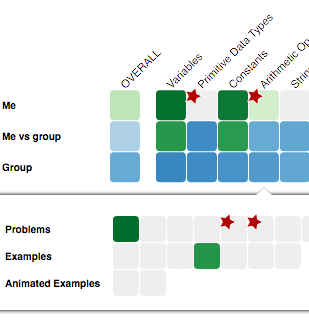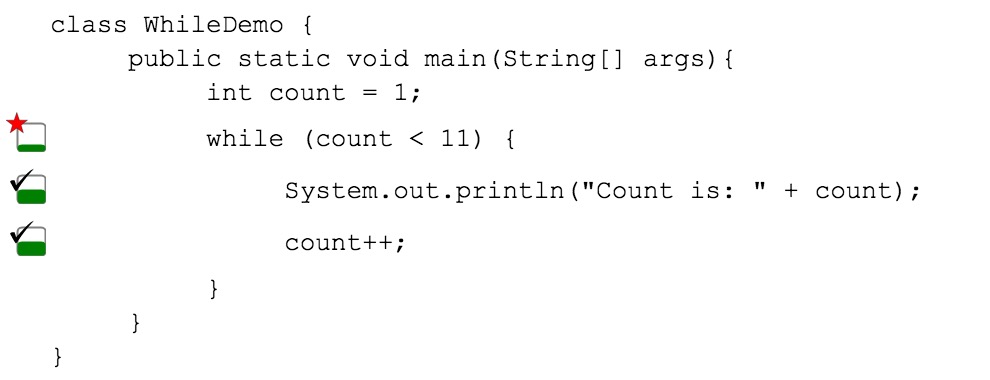Difference between revisions of "Learning Recommendation"
R.hosseini (talk | contribs) (→ReActive Recommendation) |
R.hosseini (talk | contribs) (→ReActive Recommendation) |
||
| Line 17: | Line 17: | ||
Example line recommendation: | Example line recommendation: | ||
| − | [[Image:ANS_example.jpg | + | [[Image:ANS_example.jpg]] |
== Publications == | == Publications == | ||
Revision as of 13:12, 5 April 2016
In this section we explain some of the recommender approaches that has been developed and used in Mastery Grids.
ProActive Recommendation
These recommender systems require no trigger. They are represented in Mastery Grids interface as stars on the topic and learning resources. The size of star shows the importance (weight) of recommended material. Two recommender systems has been implemented in this setting: Adaptive Sequencing, and Probabilistic Outspread approaches. Adaptive sequencing is a greedy sequencing approach aimed at maximizing each student’s level of knowledge and activities. The learning material are ranked by balancing the knowledge level of each student in the prerequisite concepts of the learning material with the knowledge that can be gained from the outcome concepts. The probabilistic outspread approach aims to select the learning material that increases the probability of the student solving all of the quizzes in the course. It uses FAST as its underlying probabilistic model of student's knowledge and performance.
Learning Resource Recommendation:
ReActive Recommendation
These recommendations occur only when student fails in solving a question correctly in Mastery Grids. The student is going to be suggested some examples that can help the student acquire the skills needed to solve the original question.
The following images show example line recommendation and learning resource recommendation in Mastery Grids.
Example line recommendation:
Publications
- Hosseini, R., Brusilovsky, P., and Guerra, J. (2013) Knowledge Maximizer: Concept-based Adaptive Problem Sequencing for Exam Preparation. In: Proceedings of the 16th International Conference on Artificial Intelligence in Education (AIED 2013), Memphis, USA, pp. 848-851. (paper) (poster)
- Brusilovsky, P. (2014) Addictive Links: Engaging Students through Adaptive Navigation Support and Open Social Student Modeling (Keynote talk). In: Proceedings of WWW 2014 Workshop on Web-based Education Technologies, Seoul, Korea, April 8, 2014. (presentation)
- Hosseini, R. and Brusilovsky, P. (2014) Example-Based Problem Solving Support Using concept Analysis of Programming Content. In: S. Trausan-Matu, K. Boyer, M. Crosby and K. Panourgia (eds.) Proceedings of 12th International Conference on Intelligent Tutoring Systems (ITS 2014), Honolulu, HI, USA, June 5-9, 2014, Springer International Publishing, pp. 683-685. (paper) (presentation)
- Hosseini, R., Hsiao, I.-H., Guerra, J., Brusilovsky, P. (2015) Off the Beaten Path: The Impact of Adaptive Content Sequencing on Student Navigation in an Open Social Student Modeling Interface. In: Proceedings of the 17th International Conference on Artificial Intelligence in Education (AIED 2015), Madrid, Spain, pp. 624-628. (paper) (poster)
- Hosseini, R., Hsiao, I.-H., Guerra, J., Brusilovsky, P. (2015) What Should I Do Next? Adaptive Sequencing in the Context of Open Social Student Modeling. Proceedings of 10th European Conference on Technology Enhanced Learning (EC-TEL 2015), Toledo, Spain, September 15-18, 2015, pp. 155-168. (paper)(presentation).


